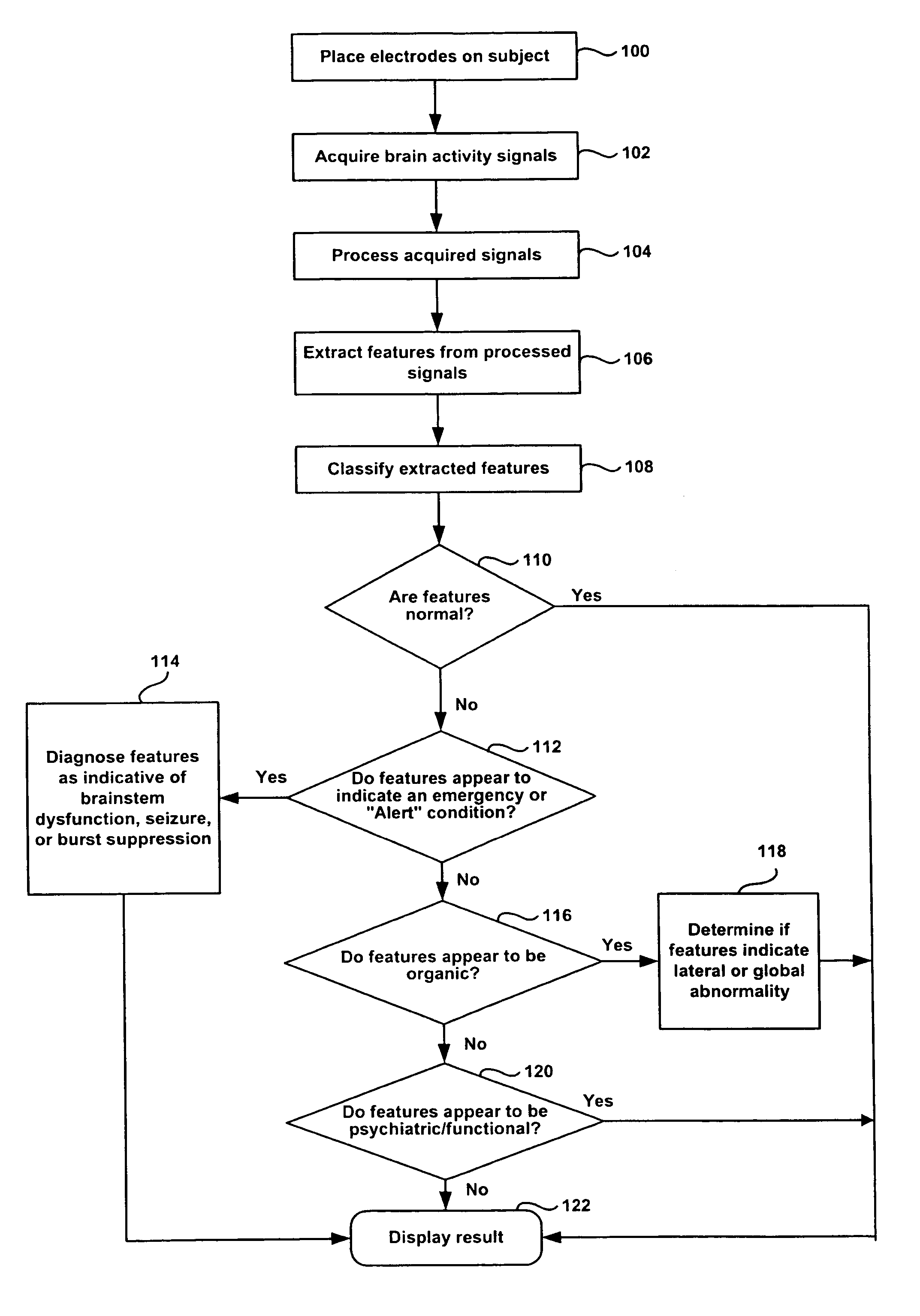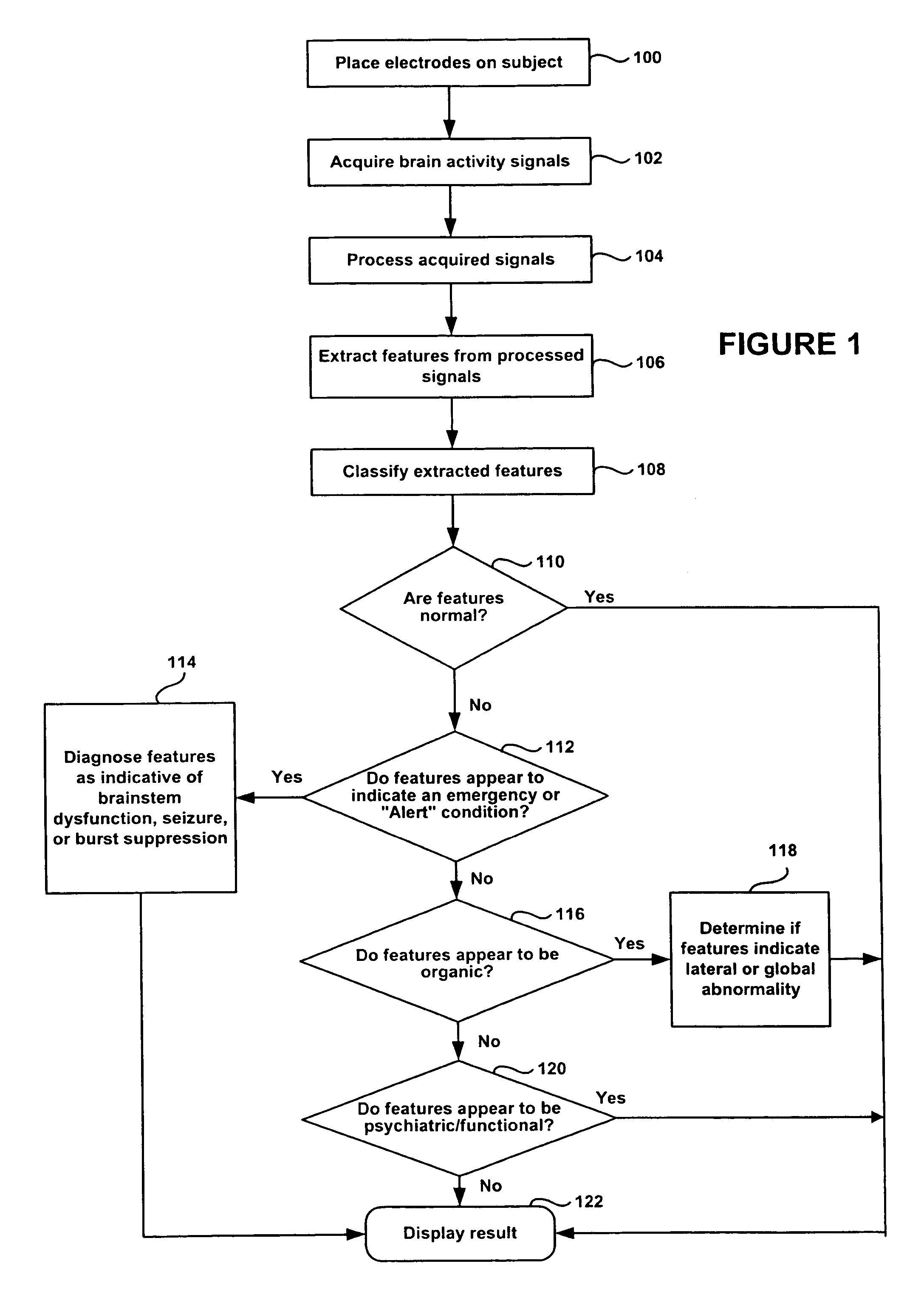Method for assessing brain function and portable automatic brain function assessment apparatus
a brain function and automatic assessment technology, applied in the field of emergency triage, can solve the problems of cost, inaccessibility to the general public, and inability of clinical laboratories to assess brain function or pathology
- Summary
- Abstract
- Description
- Claims
- Application Information
AI Technical Summary
Benefits of technology
Problems solved by technology
Method used
Image
Examples
Embodiment Construction
[0026]Reference will now be made in detail to present embodiments of the invention, an example of which is illustrated in the accompanying drawings. Wherever possible, the same reference numbers will be used throughout the drawings to refer to the same or like parts.
[0027]In accordance with embodiments consistent with the present invention, FIG. 1 shows a flowchart illustrating a method for assessing the brain state of a patient. This method may be implemented by an apparatus or device which is manufactured to perform the method given herein. An electrode set is placed on a subject (step 100). Typical electrode sets for acquiring EEG data use at least 19 electrodes. An electrode set consistent with an embodiment of the present invention may comprise a reduced electrode set, with less than 19 electrodes.
[0028]The electrodes measure the electrical fields that are produced as a result of the subject's brain activity (step 102). The activity may be spontaneous, evoked or a combination t...
PUM
 Login to View More
Login to View More Abstract
Description
Claims
Application Information
 Login to View More
Login to View More - R&D
- Intellectual Property
- Life Sciences
- Materials
- Tech Scout
- Unparalleled Data Quality
- Higher Quality Content
- 60% Fewer Hallucinations
Browse by: Latest US Patents, China's latest patents, Technical Efficacy Thesaurus, Application Domain, Technology Topic, Popular Technical Reports.
© 2025 PatSnap. All rights reserved.Legal|Privacy policy|Modern Slavery Act Transparency Statement|Sitemap|About US| Contact US: help@patsnap.com



